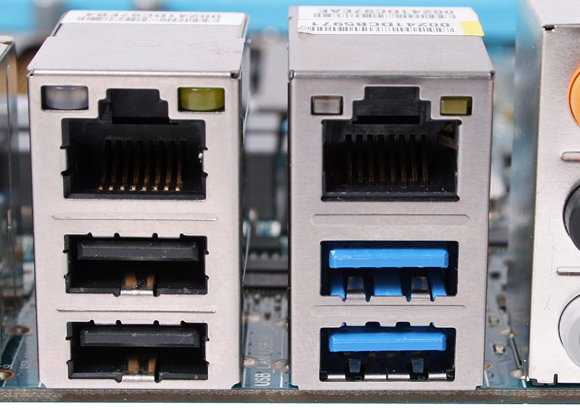
Generally speaking even when this difference exists, it won't be noticeable to even a professional player. Technically there are some cases where it would make a difference. Choice of service provider almost certainly does.

QoS markings probably do determine the outcome of games at the highest levels of play. Anyone trying to give themselves every technical advantage in the competition should focus their efforts there. In particular, the effects of network congestion are several orders of magnitude larger. I suppose it's possible that with some probability this would cause the mouse input to be relayed to the server in time to be processed one frame earlier the probability is extremely low (well under 1%), and anyone claiming it affects their game performance is confused. However, any latency improvement will be at most a couple microseconds. In summary, a USB 3.0 host controller with a full-speed or high-speed USB 2.0 device is not the same circuit as the same device attached to a USB 2.0 host controller, and the timing will not be identical. Of these effects, the PCIe differences have the greatest impact on performance, especially compared to a USB 2.0 host controller connected via a PCIe-PCI bridge. The registers of the EHCI controller also are implemented on the same die as the USB 3.0 UHCI logic, so the clock rate and digital performance will be higher. Still, rise and fall times could be a few nanoseconds faster. (This was probably a bigger deal for the jump between USB 1.x and 2.0) The passive filter components present in the mouse should dominate.

It's also much less likely to go through a PCIe-PCI bridge, which causes buffering and slight additional latency.īesides the host-side connection, the transistors driving the USB pins will also have a higher switching rate, and instead of passive components for noise filtering, the bus will use digital switches in the filter network, to allow it to be removed and not slow down USB SuperSpeed devices. The connection between system and USB 3.0 host controller will be higher speed, probably multi-lane PCIe.

Having a logical EHCI controller does not mean that the device is attached to a USB 2.0 circuit. This will cause the mouse to appear logically connected to the EHCI controller (sometimes even OHCI/UHCI). The mouse will identify itself as a USB full-speed device regardless of the port and controller it is connected to. USB 3.0 controllers support backward compatibility by performing enumeration in a way that is compatible with USB 1.x and 2.0 devices, and exposing a logical EHCI controller as part of the register map. There are a number of factors in play here: Just because data rate of a mouse is very low and can be handled by USB 1.x does not mean it can't benefit from being plugging into a faster controller.


 0 kommentar(er)
0 kommentar(er)
